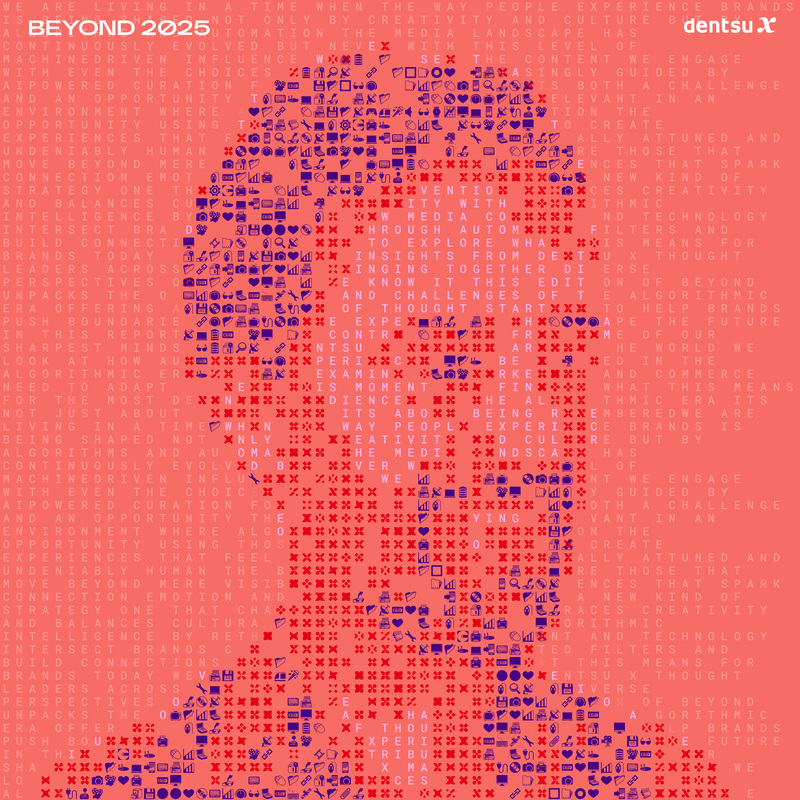This article is part of Beyond 2025: Winning in the Algorithmic Era, dentsu’s latest thought leadership series exploring what it takes for brands to thrive in a future shaped by automation, AI, and algorithmic decision-making. Each piece spotlights a key media or marketing shift and includes practical considerations for brands navigating this new landscape.

By building true data synergy, brands can make algorithms work harder and out maneuver competition.
The Why: Algorithms are taking over advertising
The media landscape is shifting rapidly as platforms like Amazon, Meta, and Google leverage AI-driven technologies to analyze thousands of signals per second and adjust how ads are shown based on user behavior, purchase intent, and engagement patterns.
The result? Auctions become more sophisticated, with bid costs fluctuating in real time, driven by market demand, competition, and seasonal trends. Ad performance is no longer based solely on brand messaging but rather on how users engage with content. And AI-powered segmentation makes traditional manual targeting less effective.
As with any major transformation, adapting can feel hard at times. Some brands have been struggling with AI-driven advertising because they view algorithms as black boxes that lead to a loss of audience control and an increase in unpredictability. Yet, the adoption of AI in the media industry is showing no signs of slowing down, with nearly 80% of global ad spend now forecast to be algorithmically enabled by 2027.
Here’s the good news: this shift is actually a massive opportunity for brands, as algorithms can be influenced through the right data inputs. In this AI-led environment, the most successful brands will not be those spending the most, but those feeding algorithms with the highest-quality, structured, and meaningful data.
The Brand Opportunity: Better commercial outcomes
Let’s look at ecommerce platforms, where culture, content and transactions meet. Sure, algorithms on these platforms can ingest isolated data assets, but only true data synergy – one that brings together first-party audience data, transactional insights, commercial trends, and ecommerce backend analytics – can significantly influence algorithmic decision making.
For example, algorithms optimize not only for who the customer is but also for what they are likely to buy, factoring in real-time product demand and stock availability. This is why brands should not just tap into their first-party data but connect it with ecommerce backend system data. By integrating loyalty program and purchase data with Google’s Performance Max AI, Omoda, a Dutch fashion retailer, saw a 14% increase in profit margin. Aligning promotions with real-time inventory insights enhanced ad efficiency and minimized wasted spend on low-stock products, leading to more profitable targeting.
Many brands also adjust ad bids reactively, increasing spending after seeing a spike in demand or competition. However, AI-driven platforms reward brands that provide predictive inputs, allowing the system to anticipate high-value buying moments. By combining historical transaction data, seasonal demand forecasts, and competitor pricing signals to optimize Amazon’s AI-powered bidding, an electronics retailer achieved 20% reduction in Cost Per Acquisition (CPA).
Another blind spot in ecommerce media strategies is the failure to align creative execution with backend data signals. AI-driven advertising platforms prioritize ad formats that maximize engagement, watch time, and click-through rates. Traditional studio-shot ads may look aesthetically pleasing, but if they do not match the engagement preferences of each individual platform, they will underperform. A recent marketing mix modeling study by dentsu, in collaboration with TikTok and 15 Nordic brands, revealed that TikTok ranks among the most effective media channels for generating revenue (11.8 short-term ROI). The study also found that user-generated content featuring creators was particularly effective in driving conversions, reinforcing the idea that content informed by and tailored to platforms resonates best with audiences.
The future of media belongs to brands who understand how to feed the algorithm better quality inputs instead of merely reacting to platform changes. Advertisers that embrace data synergy, merging first-party audience insights, commercial trends, and backend commerce analytics will gain a significant competitive edge.
To explore more trends and brand implications, download Beyond 2025: Winning in the Algorithmic Era.

